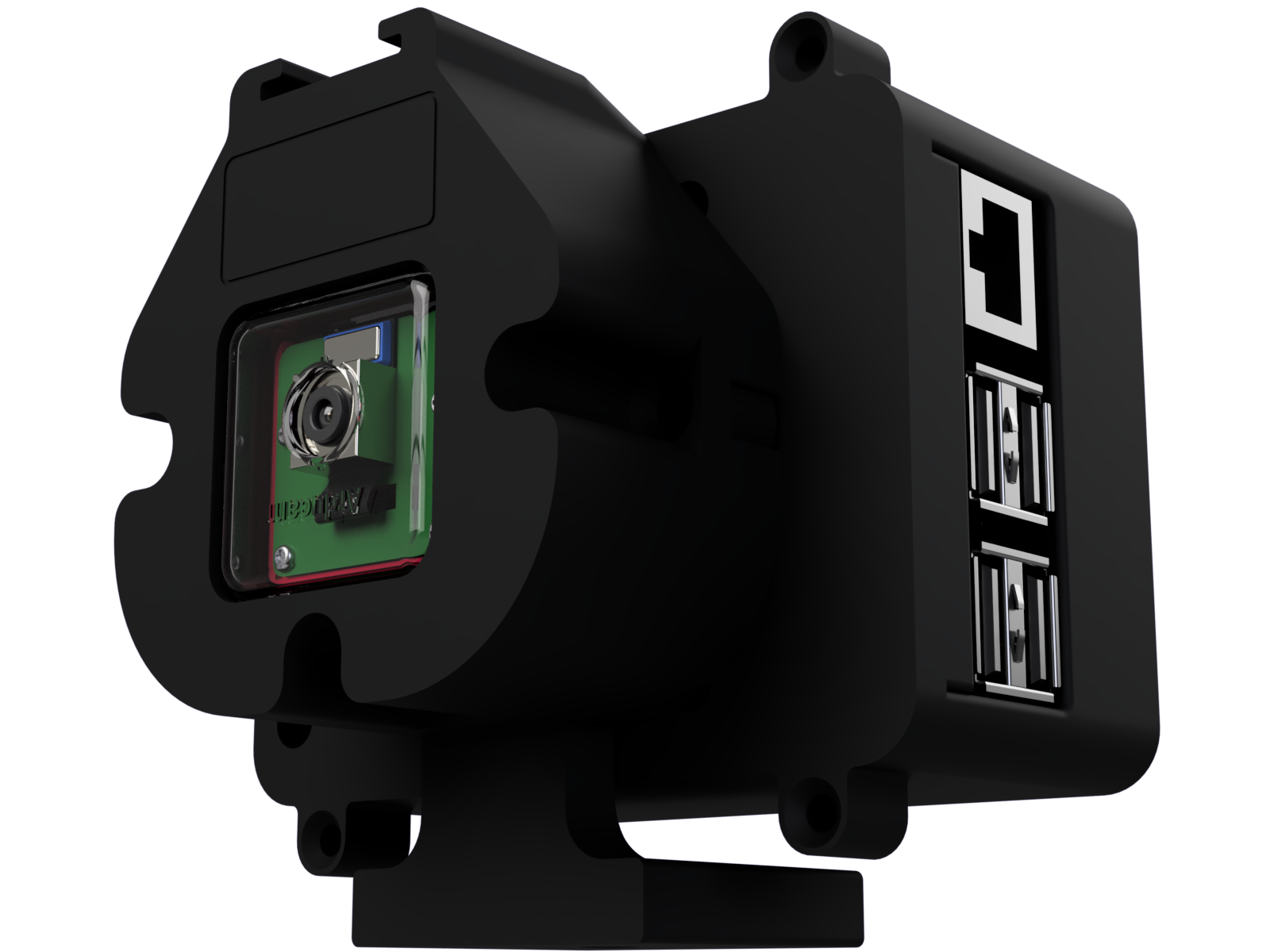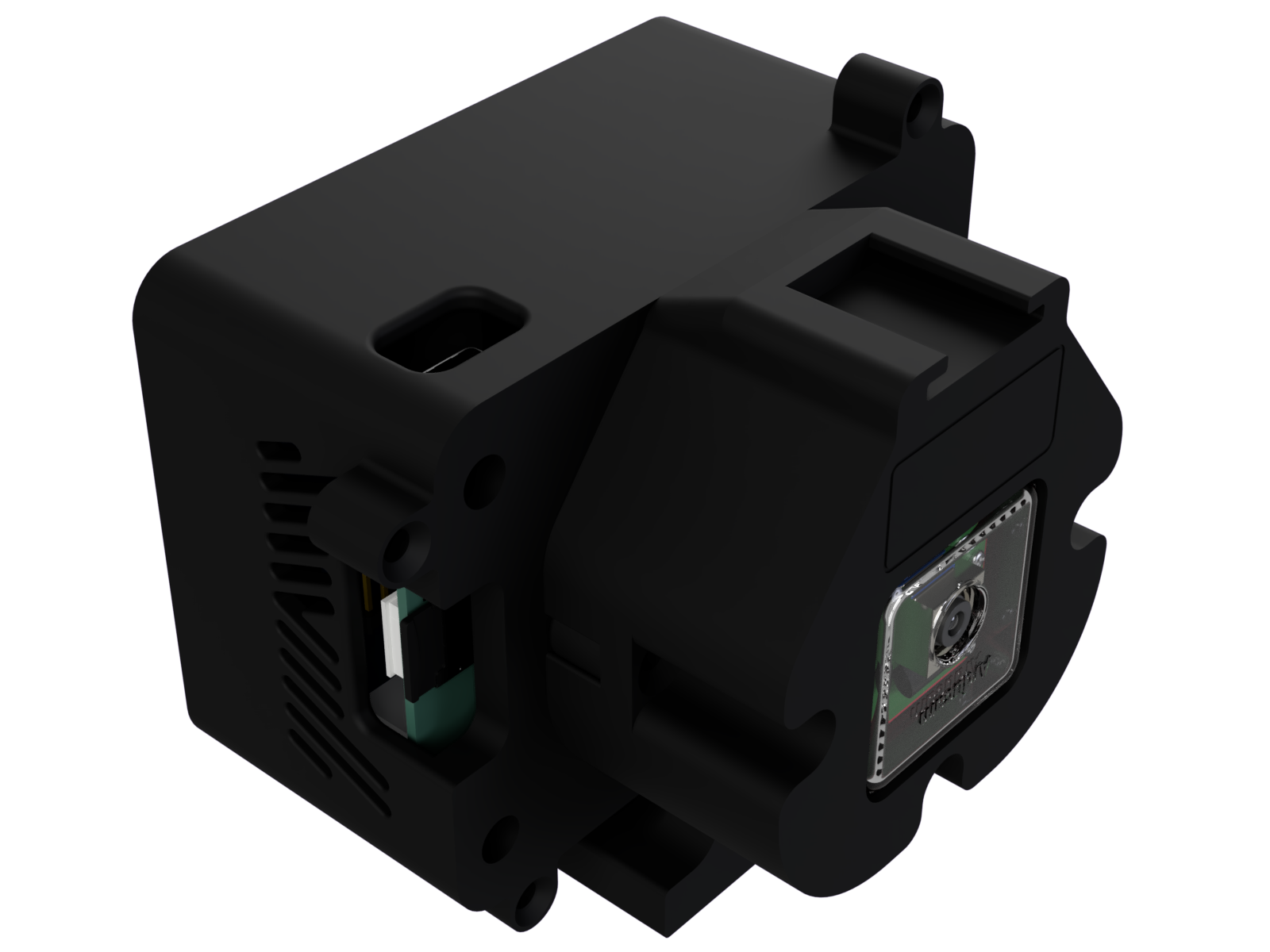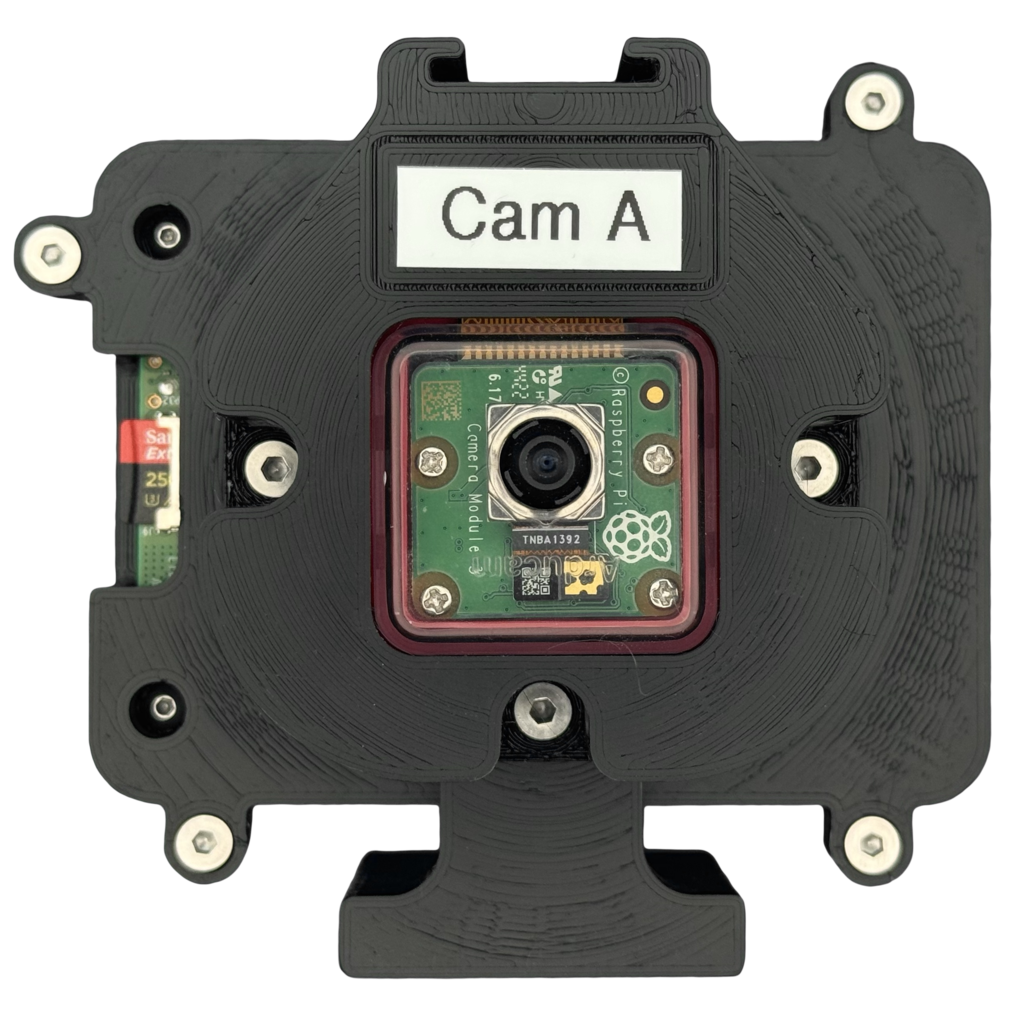Camera Rig
A custom-built multi-camera system for livestreaming and recording, designed to be fast and easy to set up and break down. The camera rig consists of a set of modular camera units built from open hardware, a low latency / high throughput network switch that also provides power over ethernet (PoE) to the cameras, and applicable mounting hardware and accessories for deployment and quick break-down.
Camera Module
The camera module is built out of a Raspberry Pi 5 with WaveShare PoE Hat, a Camera Module 3, and a 40x40x10mm Raspberry Pi 5-compatible fan. The case was designed by Unit 2738 and 3D printed out of black PLA. A cold shoe built in to the case supports an optional shotgun microphone. There are four cameras in total, though usually only two or three are needed at a time. The cameras have built-in 1/4in tripod mount threaded screw holes and are affixed with adjustable clamps attached to the upper bed frame, or on a tripod with extension arm.





Network
The cameras are connected to a Mikrotik CSS610-8P-2S+in gigabit PoE+ switch which provides both power and communication. The switch has two 10G SFP+ uplink ports, one of which is used to connect a laptop via fiber optic link. It was found during development that the bandwidth and latency of the backhaul and laptop link were the limiting factors of the system and so the network topology was optimized accordingly. Connections to the camera are done with retractable CAT 6 cables on spools, so that cabling can be deployed and stowed quickly.
Software
The software stack is based on Raspberry Pi’s flavor of libcamera, gstreamer, the libcamera gstreamer plugin (included with libcamera), and the NDI gstreamer plugin. The libcamera gstreamer plugin has been modified to allow additional options to be passed to libcamera for better control of the camera settings. A script is run on boot that automatically starts gstreamer. On the laptop, OBS with the DistroAV plugin is used to receive the NDI streams. The Source Record plugin is used to record each feed individually in addition to the composited stream output for later editing.
Lighting
Scene lighting is provided by two 24V High-CRI RGB/CW/WW LED strips with diffuser covers attached to the upper bed frame, driven by a dual 5-channel custom designed lighting controller/driver board. The custom driver board pulse-width modulates the lights fast enough that even at higher framerates there is no visible banding or flickering, and any electrical noise generated is well outside the human hearing range so the microphone does not pick it up. One strip is generally set to a neutral white while the other is set to an accent color splash, often a hypnotic pink or purple. The cameras are white-balanced ahead of time using a calibration card with the neutral white light on and accent color light off. A light meter is used to ensure the total illumination stays constant between calibration white and accented colors. Additional key lights are added if the scene requires them.
